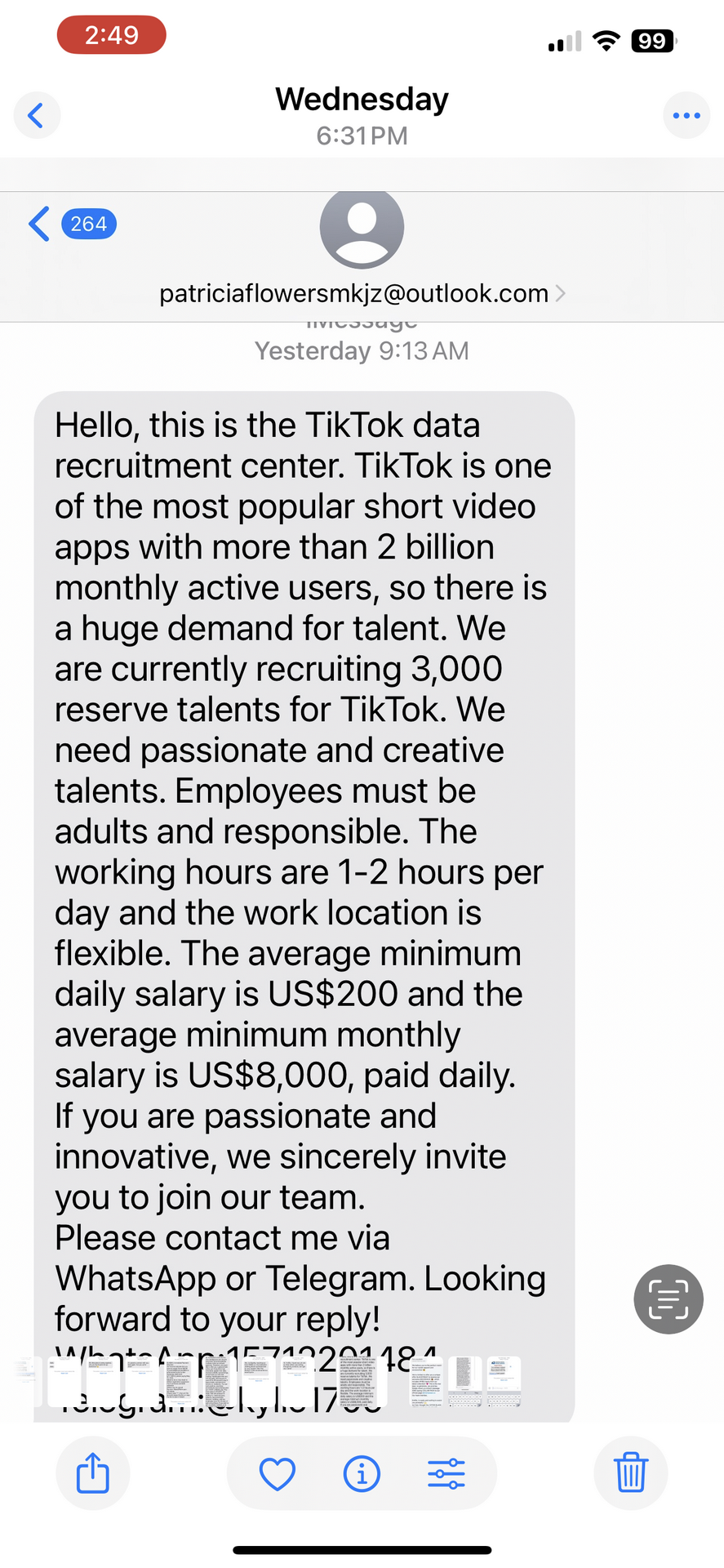Why Your Contribution Matters in Outsmarting Scammers.
Imagine a world where scams are stopped before they even reach your inbox, phone, or social media.
That’s the vision behind Flggd, a citizen-powered platform that’s rewriting the rules of scam detection. Unlike traditional tools that rely on static filters or outdated databases, Flggd thrives on the collective power of its users. Every suspicious message, email, or screenshot you submit makes Flggd smarter, sharper, and more effective at protecting you, your loved ones, and communities worldwide. Just like Waze uses real-time driver input to navigate traffic, Flggd harnesses your submissions to map the ever-evolving landscape of scams in real time. Here’s how it works, why your contributions are critical, and how Flggd’s unique blend of technology and human curation is building a safer digital future.
The Power of Your Submissions Fuels a Learning Machine
Every time you forward a suspicious email to flag@flggd.com, paste a shady text into the Flggd app, or upload a screenshot of a questionable social media post, you’re not just protecting yourself, you’re feeding a dynamic intelligence engine. Flggd’s core strength lies in its ability to learn from every submission, adapting to new scam tactics as they emerge. Whether it’s a phishing email pretending to be your bank, a smishing text demanding urgent payment, or a fake job offer on Telegram, each submission is a data point that helps Flggd identify patterns, trends, and tactics scammers use to deceive.

Here’s how it happens: when you submit a message, Flggd’s advanced algorithms, powered by cutting-edge AI, analyze its content for red flags—things like urgency, impersonation, or suspicious links. These submissions are processed through a unified pipeline that extracts key entities like email addresses, phone numbers, or URLs, as outlined in Flagged’s technical architecture. The system then categorizes the scam by type (e.g., romance, crypto, or marketplace fraud) and method (e.g., love-bombing or fake invoices). Over time, as more users submit, Flggd builds a rich database of scam mechanics, channels, and trends, enabling it to spot even the sneakiest new tactics. The more submissions you make, the faster Flggd learns, ensuring it stays ahead of scammers who constantly adapt their strategies.
Think of it like a global neighborhood watch. Each submission is a report from the front lines, helping Flagged map out where scams are hitting, how they’re spreading, and what they look like. For example, a user in New York might flag a fake PayPal email, while someone in London reports a similar scam on WhatsApp. Flggd’s system connects the dots, identifying patterns like reused domains or recycled phrases, making it smarter with every contribution. This real-time, crowd-sourced intelligence mirrors how Waze uses driver reports to update traffic conditions instantly, ensuring you get accurate, up-to-date scam alerts tailored to your region or scam type.
Human Curation Keeps Flagged Sharp Behind the Scenes
While Flggd’s AI is powerful, it’s the human touch that keeps it trustworthy and precise. Every submission passes through a human-in-the-loop (HITL) curation process, designed to reduce false positives and ensure the system learns accurately. When Flggd’s algorithms flag a potential scam, it doesn’t automatically assume it’s correct. Instead, a team of expert moderators reviews flagged content, especially when the AI detects ambiguous or “grey” verdicts. This process, detailed in Flggd’s Submission Architecture, ensures that only verified red flags are added to the system’s knowledge base, preventing errors that could mislabel legitimate messages as scams.
This human curation is like a quality control checkpoint. Moderators validate AI-generated red flags, cross-check them against known scam patterns, and refine the system’s understanding of new tactics. For instance, if a user submits a message with a new type of crypto scam, moderators might confirm its legitimacy, tag it as a “pig butchering” scam, and feed that insight back into the system. This feedback loop, stored in a dedicated review queue, ensures Flggd continuously improves, learning from real-world data while maintaining high accuracy; over 90% precision, as targeted in Flggd’s growth playbook.
Your submissions are the fuel for this process. The more varied and frequent your reports, the richer the data moderators have to work with, enabling them to spot emerging trends like AI-generated scam images or smishing campaigns with manipulative tones. This human-AI partnership ensures Flggd isn’t just reacting to scams but proactively evolving to anticipate them, much like a living, learning organism.
Empowering Scam School and Proactive Prevention
Your submissions don’t just stop scams, they power Flggd’s educational tools, like Scam School and the Learning Arcade. These gamified features, outlined in Flggd’s Community Progression System, turn your reports into interactive lessons that teach others how to spot scams. For example, a new smishing tactic you flag might inspire a Scam School quiz, challenging users to identify similar messages. As more users submit, Flggd updates these lessons with fresh examples, ensuring they reflect the latest scam trends, from fake marketplace listings to mule job offers. This keeps the community educated and vigilant, transforming your contributions into collective knowledge.
Beyond education, your submissions drive proactive prevention. Flggd’s Scam Entity Profiler analyzes entities like URLs or crypto wallets, enriching them with threat intelligence to create detailed risk profiles. These insights feed into tools like the Global Scam Graph, which maps connections between scam actors, and the planned Prosecutor Dossier Exporter, which generates evidence packs for law enforcement. By submitting frequently, you help Flggd build a comprehensive picture of scam networks, enabling banks, NGOs, and prosecutors to act faster and more effectively. Just as Waze’s real-time data helps drivers avoid traffic jams, your submissions help Flggd steer communities away from digital traps.
Why Your Submissions Matter - The Call to Action
Flggd’s strength grows with every message you submit. Each report sharpens its ability to detect new scam categories, methods, and channels, from romance scams to fake investment platforms. The more you submit, the more Flggd learns about how scammers operate, whether they’re using love-bombing in texts or spoofed logos in emails. This collective intelligence doesn’t just protect you; it safeguards vulnerable groups, informs law enforcement, and fuels a movement against digital fraud.
To keep Flggd learning and adapting, submit every suspicious message you encounter. That weird text from “Royal Mail”? Forward it. That questionable Facebook Marketplace listing? Upload it. That email promising free Bitcoin? Paste it into the app. Every submission, no matter how small, adds to Flggd’s knowledge base, helping it stay ahead of scammers and protect others. Plus, with features like the “Shared with Flggd” toggle, your submissions can inspire others to join the fight, amplifying awareness through social sharing.
Flggd isn’t just an app, it’s a community-powered mission to outsmart scammers. By submitting as many messages as you can, you’re not just a user; you’re a digital defender, helping Flggd learn, adapt, and protect in real time. Download the app, start flagging, and let’s build a safer digital world together.
 Android available August 7th, 2025
Android available August 7th, 2025
iOS available September, 2025



